Streets of Rage (known as Bare Knuckle in Japan) was one of the most recognised ‘Beat ‘Em Up’ games in the arcade scene, back in the 90‘s. Its simple but effective gameplay and iconic soundtrack helped it stand out from the rest and had a big influence in people buying a Sega Megadrive/Genesis to bring the game home.
Finally after 26 long years, the legendary Sega classic has received a sequel. After their success with their remake of Wonder Boy III: The Dragon’s Trap, French studio and publisher, Dotemu, with developer Lizardcube, approached Sega about making a sequel in the iconic series. Sega agreed and licensed the franchise to the studios, along with co-developer by Guard Crush Games and production of Streets of Rage 4 began in 2018 and announced to the public later that year. At last, Streets of Rage 4 is here, released for PlayStation 4, Xbox One, Nintendo Switch and Steam.
The story picks up 10 years after the events of Streets of Rage 3 where criminal mastermind Mr. X was finally defeated for good. Wood Oak City was thought to be at peace, but falls under control of a new crime syndicate, the twin son and daughter of Mr. X, known as the Y Twins. Named Mr. Y and Ms. Y., together they plan to brainwash the city using hypnotic music.
The 2 heroes from the original 3 games, Axel Stone and Blaze Fielding reunite to take down the Y Twins and are joined by the guitar wielding Cherry Hunter and the cybernetically enhanced, Floyd Iraia. Cherry is also the daughter of Adam Hunter from the first game (who even joins the cast as a playable character not long into Story Mode) and Floyd will be recognised as the apprentice of Dr. Zan from the third game.
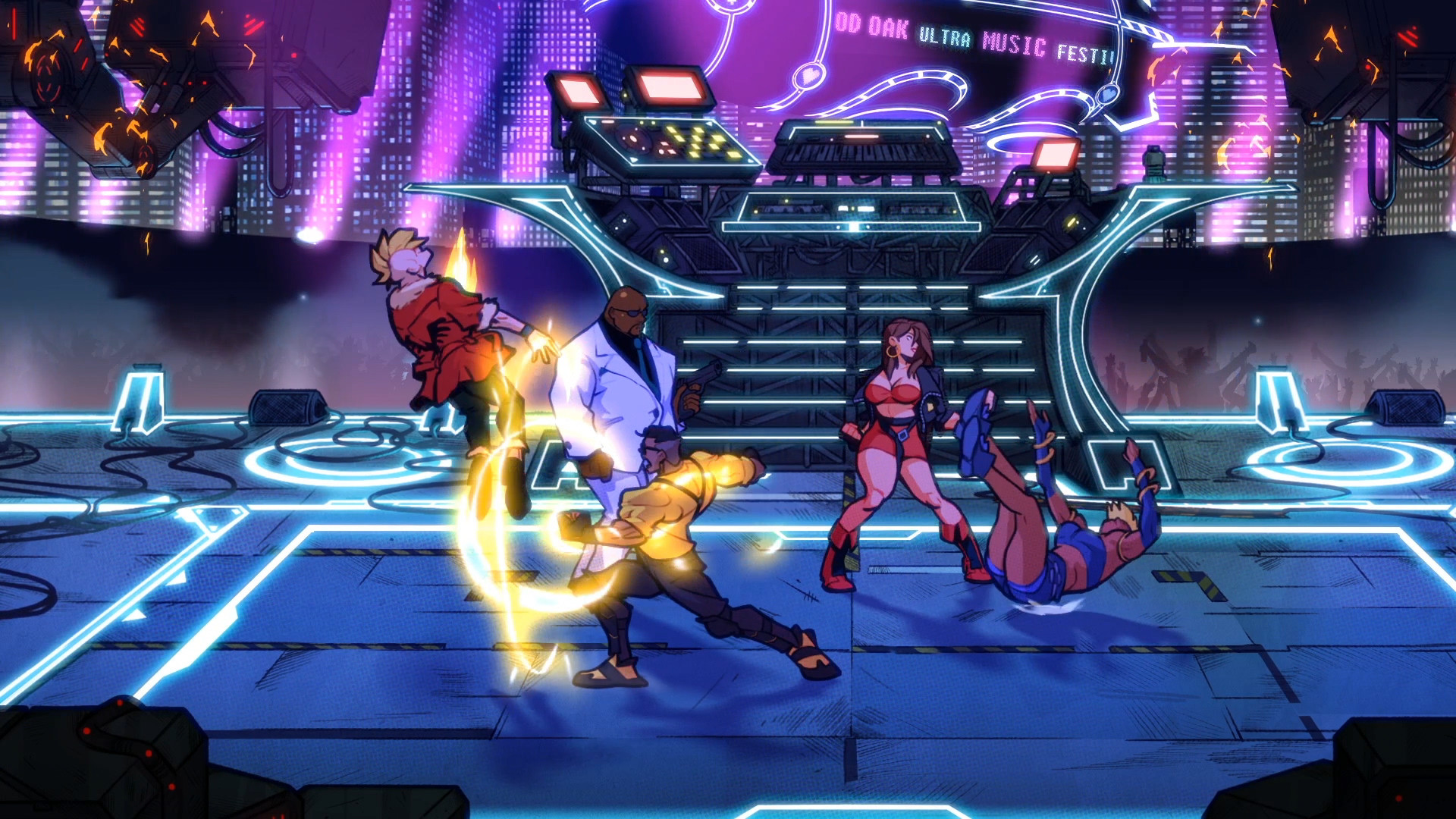
Beginning the game with Story Mode (which helps unlock other modes), players will have a choice of 4 unique characters and later Adam joining them as the fifth (which is also his first time back as a playable character since the first game, in 1992). Each character have their advantages and disadvantages, but it’s up to the player to decide who they feel most comfortable with.
Axel and Adam are the most well rounded fighters, Blaze lacks a bit of power compared to them but makes up for it in speed and strong throws, Cherry is the least strongest but the fastest of the lot and can achieve the highest combos and Floyd of course, may be slowest of the team but more than makes up for it with his incredible strength, heavy attacks and brutal throws.
Immediately from the first stage, long time fans of the series will feel very familiar with the classic side scrolling ‘Beat ‘Em Up’ gameplay with some very welcome additions to the combat system. The gameplay can be adjusted in the settings to play with modern or classic controls.
Classic controls feel just like you’re playing the original 3 games and while modern controls mostly feel the same, they are much more helpful in distinguishing which action you want to perform. For example in the old games, the attack button was also used to pick up items which could leave you open to enemy attacks. Whereas, the modern controls in the fourth game, separate buttons are used for attacking and picking up items and this helps prevent players from having minor accidents that could lead to a Game Over.
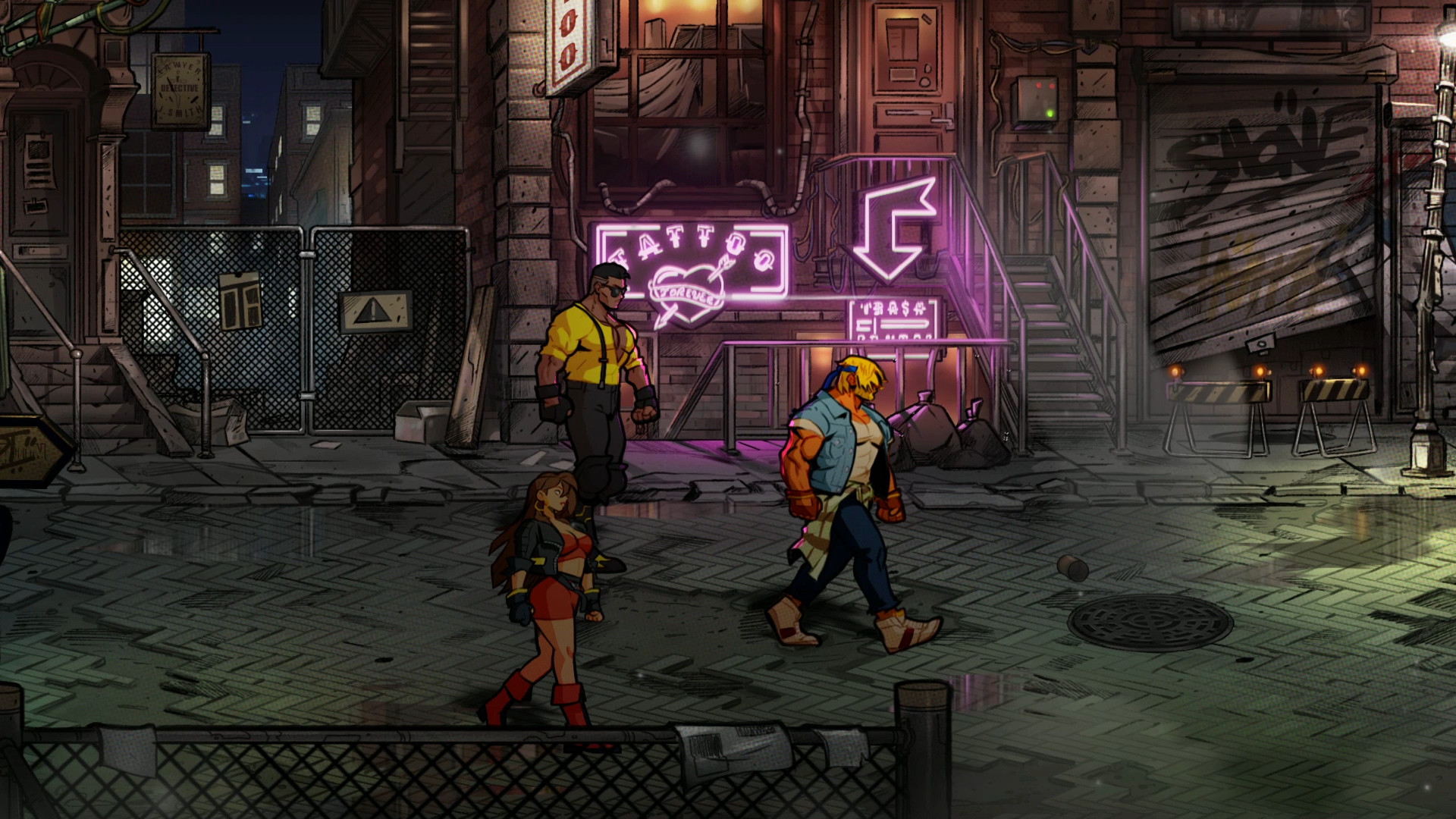
Another little improvement to the gameplay is that enemies can’t walk off screen leaving the player behind waiting for them to come back, which was very irritating and very common in just about every similar game from that era. Instead players can trap enemies against the side of the screen, using it like a wall and achieve devastating combos. Even with only 1 button to attack, there are a wide variety of moves at the players’ disposal.
Blitz moves deal some extra damage with nothing to lose, Special moves deal heavy damage but at the cost of a little of the character’s health (which players can get back by attacking enemies without getting hit) and Star moves are good for when surrounded by multiple enemies, but are limited to the amount of Stars a player has, which are rare items found in every stage. Blitz, Special and Star moves can also be used to extend combo strings.
Something that was introduced in Streets of Rage 3 was that every character had the ability to run instead of just walking and also side roll to avoid attacks. Running allowed characters to perform unique moves while running and also got them to the next section of the stage much quicker. Although Cherry can run and Adam can do quick dashes, it would’ve been really handy if every character had the ability to run and side roll.
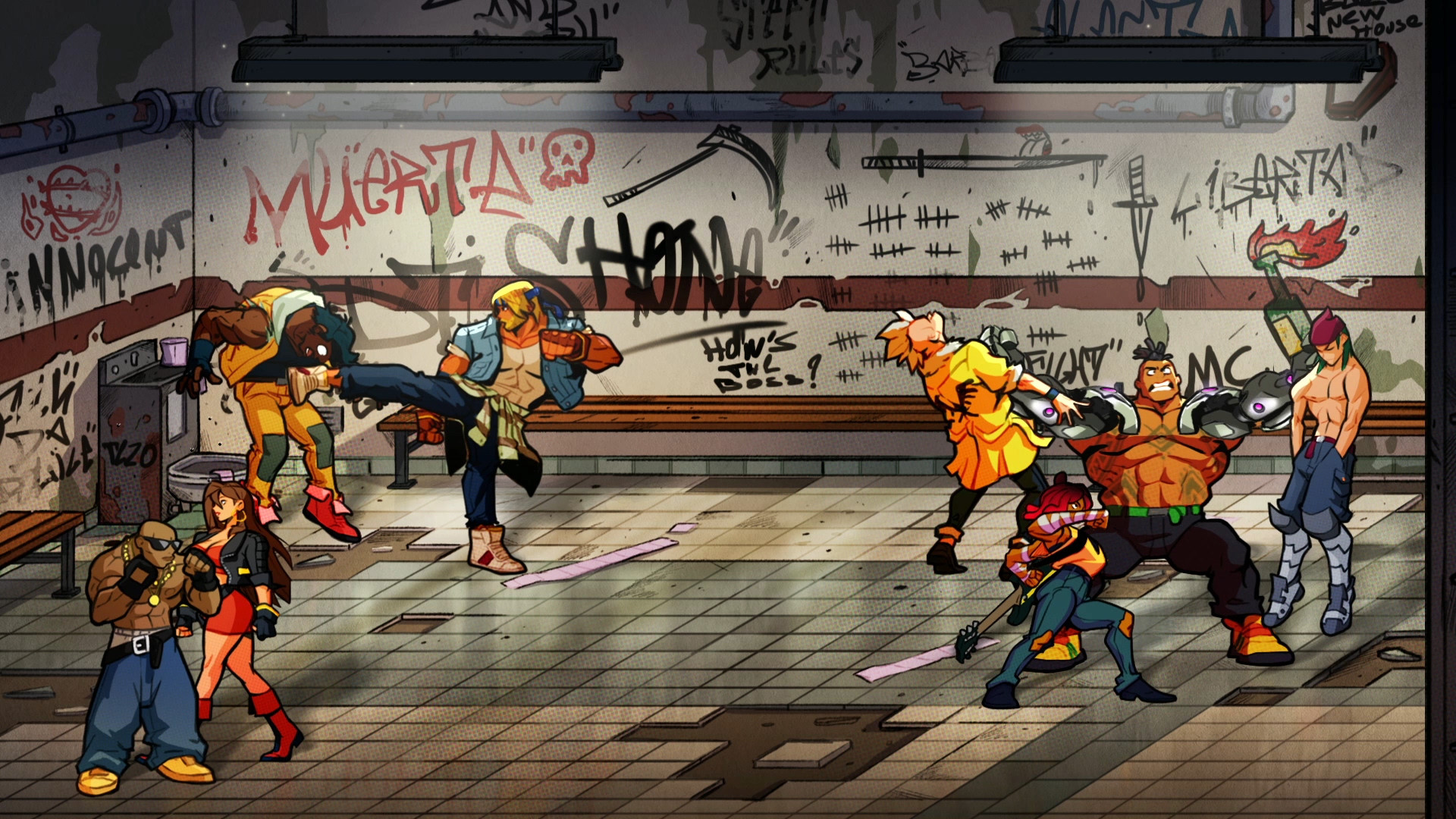
Weapons are also back such as pipes and knives, as well as a fair few new ones including tasers, grenades, pool cues and more. Just like previous games, the weapons can be thrown at enemies but in Streets of Rage 4, the weapons bounce off the enemies and can even be caught by pressing the item pick up button at the right time, to be used again.
Weapons can also be caught while jumping in the air and even after being thrown by enemies to prevent damage and to use them to your advantage. Food items can be found to replenish health (and even their appearance can be changed in the settings) as well as bags or briefcases full of money to get higher scores.
The game’s art style at first was heavily criticised. Although the original 3 games had pixelated graphics during gameplay, they still leaned more on the realistic side with the game’s cover art and promotional material, with a bit of Japanese influence, since it was a product of the country and how they perceived Western culture at the time.
Streets of Rage 4 has a more Western comic art look, which is a huge change to the series’ overall appearance. However, after actually playing the game for a few minutes, the art style just strangely seems to fit a Streets of Rage game. The returning characters each have a new modern attire that still pays homage to their appearances from the previous games and have a bit of that 90’s touch.
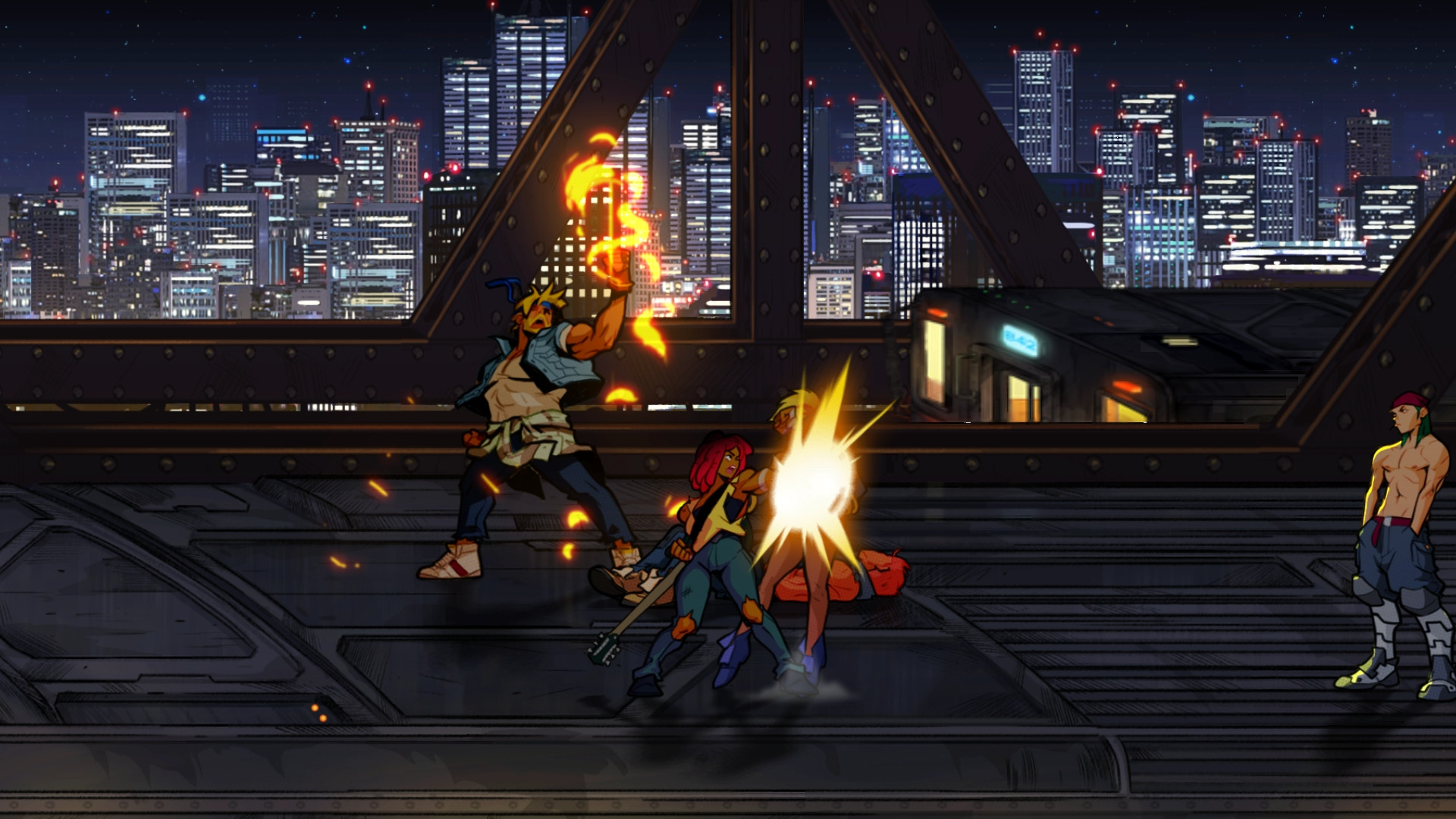
Axel, Blaze and Adam look and feel just so familiar in this modern setting. Majority of the common enemies in various colours from the older games also return and act and feel like they did before, which should bring back a lot of memories. New enemies are also introduced providing a fresh challenge. Its also interesting to see that not all enemies are on the same side. The street thugs and corrupt cops will actually fight each other as well as target the heroes. Brand new and unique bosses as well as some returning ones are also included and are as challenging and unfair as all bosses from the Streets of Rage games. The Y Twins may not be as threatening when they fight solo, but are a force to be reckoned with when fighting as a team.
One of the biggest things that stood out from the Streets of Rage games was its iconic soundtrack, composed by Yuzo Koshiro and Motohiro Kawashima. While Streets of Rage 3 wasn’t as well received for its music as well as other reasons (it leaned more towards sci fi than an urban street feel), the first 2 games’ music had a unique nightclub feel and perfectly suited the game’s aesthetics. The soundtrack for Streets of Rage 4 this time was done by French compose, Olivier Deriviere, who has an impressive resume to his name. While the new soundtrack can never beat the classic tunes of the first 2 games (as is the case with the music scene in general), Olivier does an excellent job with his renditions of series’ memorable soundtrack and every song just fit perfectly with the stages they represent. There is an option to switch back to the retro soundtrack while playing the game, which honours the past and will be very well received by old school fans.
There are a variety of modes that offer lots of replayability. Story mode lets players experience the story, which is presented in a comic style with subtitles. It also has unlimited continues and only have to restart from the beginning of the stage after losing instead of the entire game. There are also assists such as extra lives when retrying a stage. Arcade mode is like Story mode but doesn’t have any continues and losing the game means Game Over altogether.
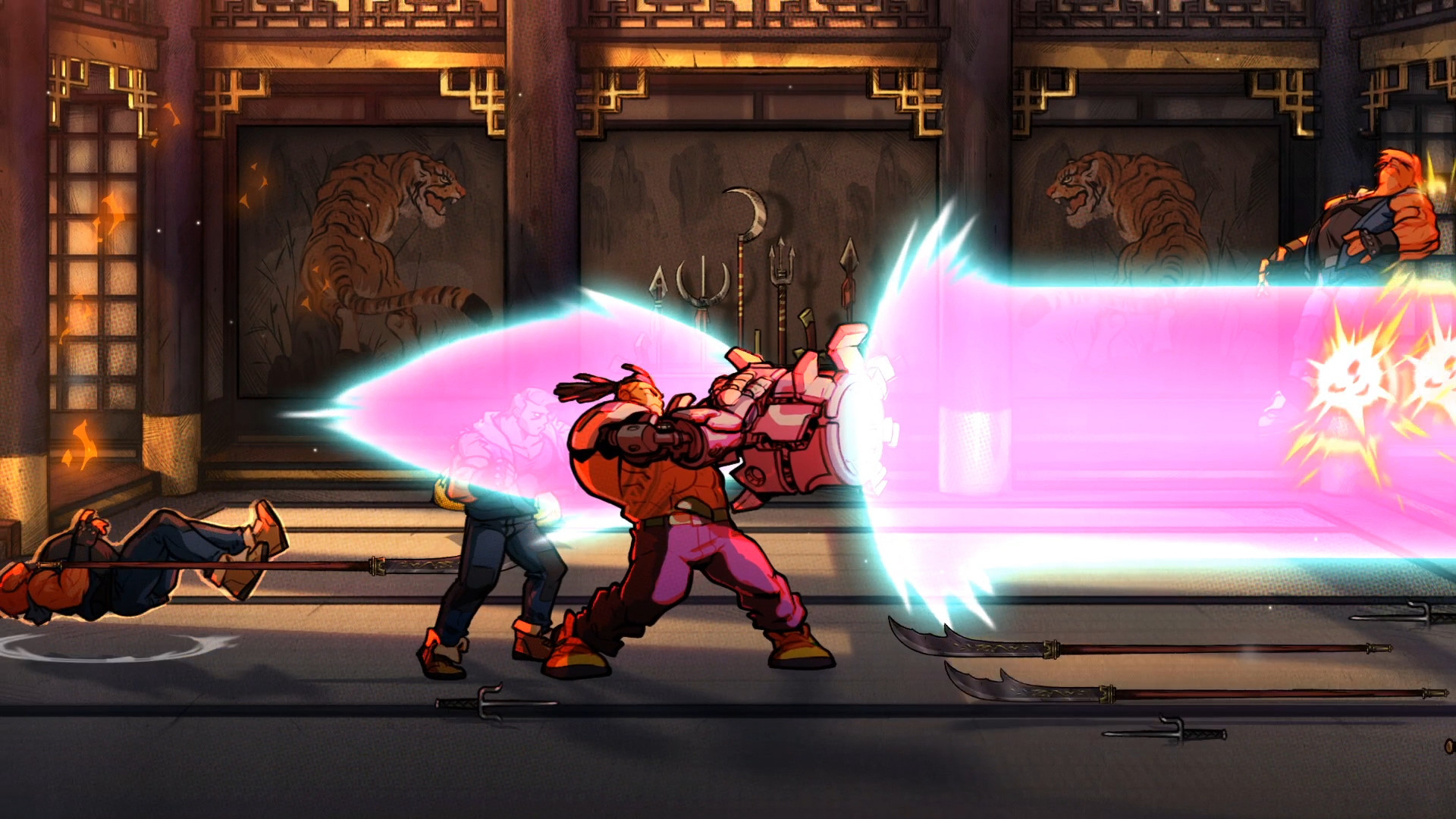
Stage Select lets players start from any stage they want and Boss Rush is facing off with only the bosses from the whole game. The difficulty can be adjusted for all these modes. Extras includes bios for each character explaining their individual story and a Gallery showing all the concept art during the game’s development.
Another reason the game was popular was due to its multiplayer. The first 3 games could only allow up to 2 players at a time, but the fourth game can have up to 4 players at once which will surely bring together fans of the franchise. Online play is also available with players being able to put a call out for a second player or join a list of games available detailing the conditions set by that player. Inviting a friend for a private session is also an option. Currently only up to 2 players can play co-op online. Friendly Hit (or Friendly Fire) can be turned on or off unlike the previous games, which really helps prevent accidents between players or 1 player purposely sabotaging the other. From my personal experience, the online play seems to lag a little at the beginning but smooths out after a few short minutes and plays flawlessly. Of course the connection strength between the two players is also a factor. Hopefully a future patch update can fix the online play as well as allow 4 players online.
The sequel that took 26 years in the making is definitely worth checking out for long-time fans of the series and newcomers looking for something new and unique. The new fresh art style, catchy soundtrack new and old, bone crunching gameplay, all the easter eggs that honour the past as well as more secrets and unlockables not mentioned in this review to prevent spoilers, make this fourth entry to the series a welcome addition to the neglected genre. Games like Streets of Rage 4 and River City Girls prove that this style of video games is not dead and hopefully this will inspire other developers to consider bringing back their long forgotten franchises of the Beat ‘Em Up genre.

The Good
- Finally a sequel after 26 years
- Familiar bone crunching gameplay the series is known for
- Variety of moves and combos
- Catchy soundtrack new and old
- Fresh art style
- 4 player co-op locally and 2 player online
- 4 player co-op locally and 2 player online
- Updated but familiar control scheme
- Enemies no longer walk off screen
The Bad
- Not all characters being able to dash, run or side roll
- Not being able to have 4 players online
- Online play can be a rough at times








